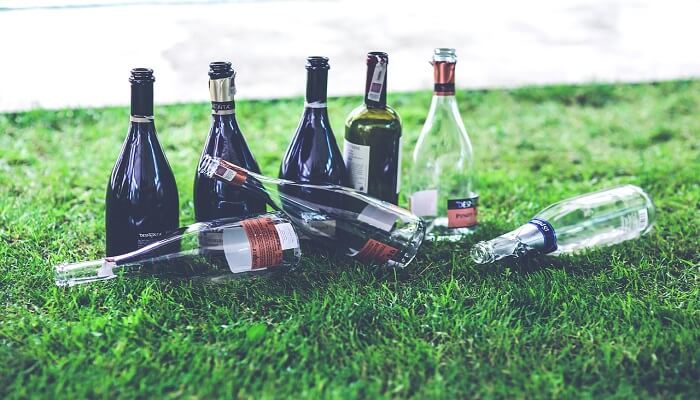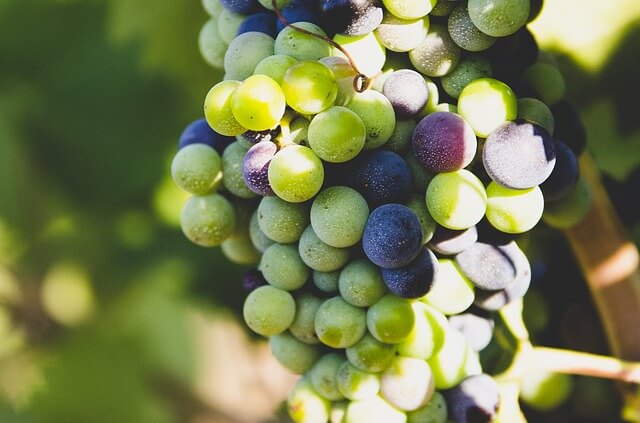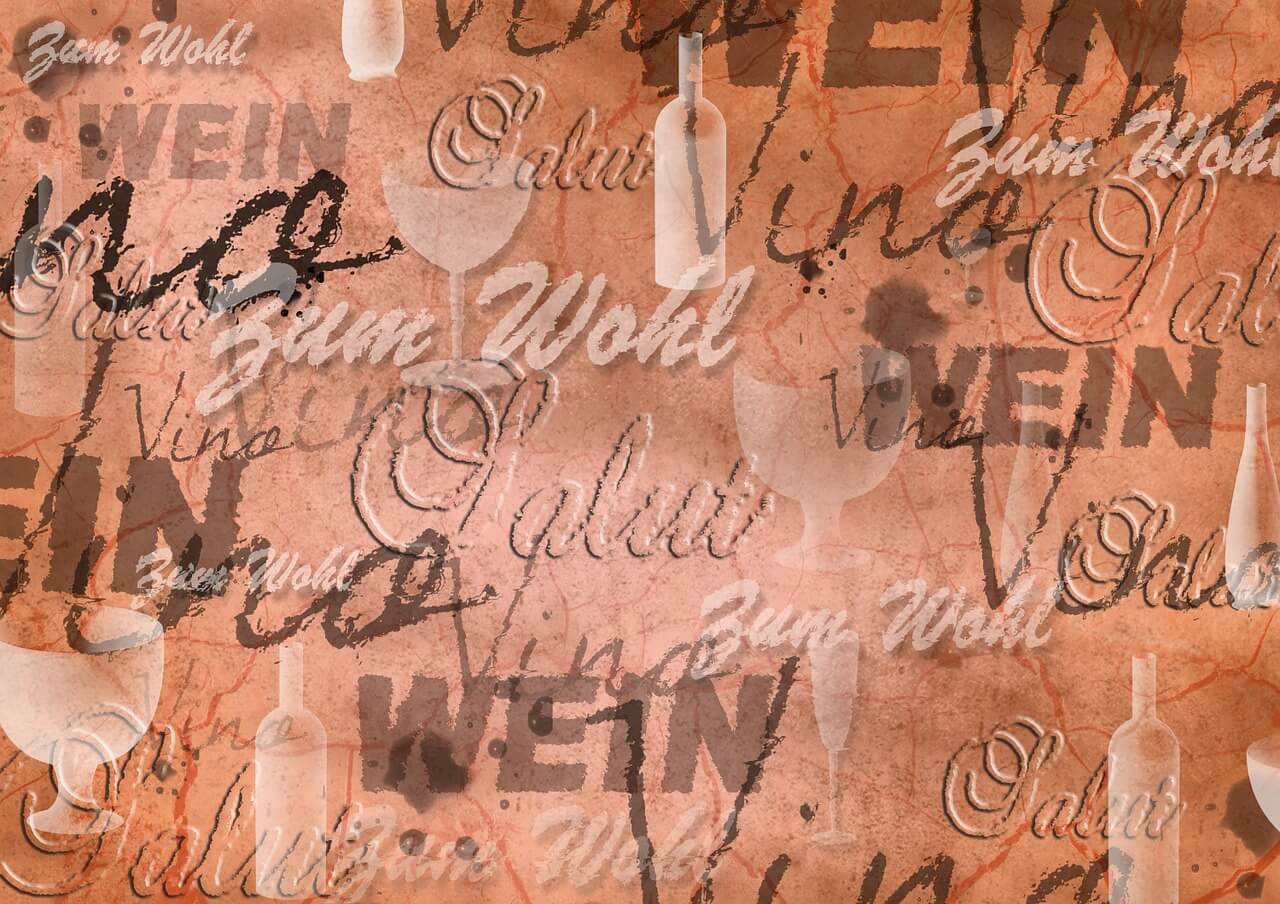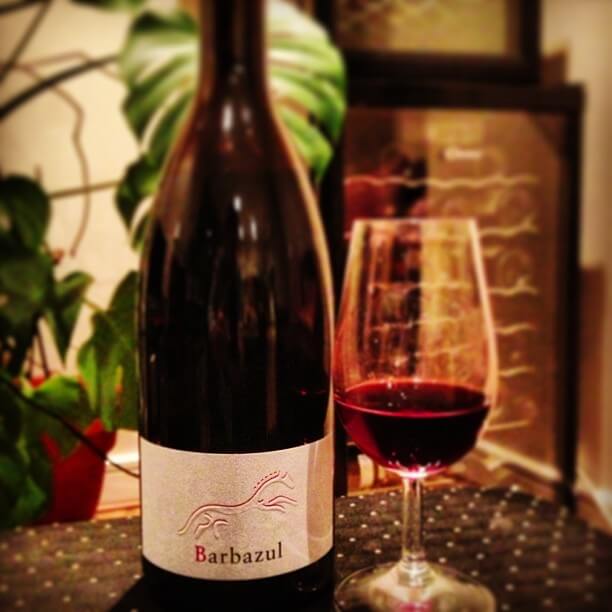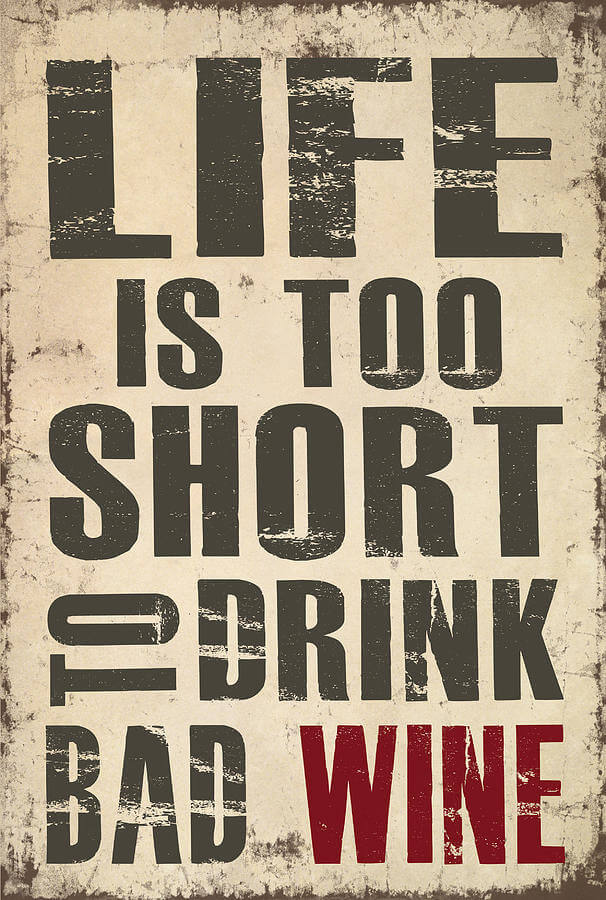Tags : Robert Parker Wine Glossary
by Robert Parker

acetic: Wines, no matter how well made, contain quantities of acetic acidity that have a vinegary smell. If there is an excessive amount of acetic acidity, the wine will have a vinegary smell and be a flawed, acetic wine.
acidic: Wines need natural acidity to taste fresh and lively, but an excess of acidity results in an acidic wine that is tart and sour.
acidity: The acidity level in a wine is critical to its enjoyment and livelihood. The natural acids that appear in wine are citric, tartaric, malic, and lactic. Wines from hot years tend to be lower in acidity, whereas wines from cool, rainy years tend to be high in acidity. Acidity in a wine can preserve the wine’s freshness and keep the wine lively, but too much acidity, which masks the wines flavors and compresses its texture, is a flaw.
aftertaste: As the term suggests, the taste left in the mouth when one swallows is the aftertaste. This word is a synonym for length or finish. The longer the aftertaste lingers in the mouth (assuming it is a pleasant taste), the finer the quality of the wine.
aggressive: Aggressive is usually applied to wines that are either high in acidity or have harsh tannins, or both.
angular: Angular wines are wines that lack roundness, generosity, and depth. Wine from poor vintages or wines that are too acidic are often described as being angular.
aroma: Aroma is the smell of a young wine before it has had sufficient time to develop nuances of smell that are then called its bouquet. The word aroma is commonly used to mean the smell of a relatively young, unevolved wine.
astringent: Wines that are astringent are not necessarily bad or good wines. Astringent wines are harsh and coarse to taste, either because they are too young and tannic and just need time to develop, or because they are not well made. The level of tannins (if it is harsh) in a wine contributes to its degree of astringence.
austere: Wines that are austere are generally not terribly pleasant wines to drink. An austere wine is a hard, rather dry wine that lacks richness and generosity. However, young Rhônes are not as austere as young Bordeaux.
backward: An adjective used to describe (1) a young largely unevolved, closed, and undrinkable wine, (2) a wine that is not ready to drink, or (3) a wine that simply refuses to release its charms and personality.
balance: One of the most desired traits in a wine is good balance, where the concentration of fruit, level of tannins, and acidity are in total harmony. Balanced wines are symmetrical and tend to age gracefully.
barnyard: An unclean, farmyard, fecal aroma that is imparted to a wine because of unclean barrels or unsanitary winemaking facilities.
berrylike: As this descriptive term implies, most red wines have an intense berry fruit character that can suggest blackberries, raspberries, black cherries, mulberries, or even strawberries and cranberries.
big: A big wine is a large-framed, full-bodied wine with an intense and concentrated feel on the palate. Most red Rhône wines are big wines.
blackcurrant: A pronounced smell of blackcurrant fruit is commonly associated with certain Rhône wines. It can vary in intensity from faint to very deep and rich.
body: Body is the weight and fullness of a wine that can be sensed as it crosses the palate. full-bodied wines tend to have a lot of alcohol, concentration, and glycerin.
Botrytis cinerea: The fungus that attacks the grape skins under specific climatic conditions (usually alternating periods of moisture and sunny weather). It causes the grape to become superconcentrated because it causes a natural dehydration. Botrytis cinerea is essential for the great sweet white wines of Barsac and Sauternes. It rarely occurs in the Rhône Valley because of the dry, constant sunshine and gusty winds.
bouquet: As a wine’s aroma becomes more developed from bottle aging, the aroma is transformed into a bouquet that is hopefully more than just the smell of the grape.
brawny: A hefty, muscular, full-bodied wine with plenty of weight and flavor, although not always the most elegant or refined sort of wine.
briery: I think of California Zinfandel when the term briery comes into play, denoting that the wine is aggressive and rather spicy.
brilliant: Brilliant relates to the color of the wine. A brilliant wine is one that s clear, with no haze or cloudiness to the color.
browning: As red wines age, their color changes from ruby/purple to dark ruby, to medium ruby, to ruby with an amber edge, to ruby with a brown edge. When a wine is browning it is usually fully mature and not likely to get better.
carbonic maceration: This vinification method is used to make soft, fruity, very accessible wines. Whole clusters of grapes are put into a vat that is then filled with carbonic gas. This system is used when fruit is to be emphasized in the final wine in contrast to structure and tannin.
cedar: Rhône reds can have a bouquet that suggests either faintly or overtly the smell of cedarwood. It is a complex aspect of the bouquet.
chewy: If a wine has a rather dense, viscous texture from a high glycerin content, it is often referred to as being chewy. High-extract wines from great vintages can often be chewy, largely because they have higher alcohol hence high levels of glycerin, which imparts a fleshy mouthfeel.
closed: The term closed is used to denote that the wine is not showing its potential, which remains locked in because it is too young. Young wines often close up about 12-18 months after bottling, and depending on the vintage and storage conditions, remain in such a state for several years to more than a decade.
complex: One of the most subjective descriptive terms used, a complex wine is a wine that the taster never gets bored with and finds interesting to drink. Complex wines tend to have a variety of subtle scents and flavors that hold one’s interest in the wine.
concentrated: Fine wines, whether they are light-, medium-, or full-bodied, should have concentrated flavors. Concentrated denotes that the wine has a depth and richness of fruit that gives it appeal and interest. Deep is a synonym for concentrated.
corked: A corked wine is a flawed wine that has taken on the smell of cork as a result of an unclean or faulty cork. It is perceptible in a bouquet that shows no fruit, only the smell of musty cork, which reminds me of wet cardboard.
cuvée: Many producers in the Rhône Valley produce special, deluxe lots of wine or a lot of wine from a specific grape variety that they bottle separately. These lots are often referred to as cuvées.
decadent: If you are an ice cream and chocolate lover, you know the feeling of eating a huge sundae of rich vanilla ice cream lavished with hot fudge and real whipped cream. If you are a wine enthusiast, a wine loaded with opulent, even unctuous layers of fruit, with a huge bouquet, and a plump, luxurious texture can be said to be decadent.
deep: Essentially the same as concentrated, expressing the fact that the wine is rich, full of extract, and mouth filling.
delicate: As this word implies, delicate wines are light, subtle, understated wines that are prized for their shyness rather than for an extroverted, robust character. White wines are usually more delicate than red wines. Few Rhône red wines can correctly be called delicate.
demi-muid: 650-liter Burgundy barrels which are essentially the equivalent of three regular barrels.
diffuse: Wines that smell and taste unstructured and unfocused are said to be diffuse. When red wines are served at too warm a temperature they often become diffuse.
double decanting: This is done by first decanting the wine into a decanter and then rinsing the original bottle out with non-chlorinated water and then immediately repouring the wine from the decanter back into the bottle. It varies with the wine as to how long you cork it.
dumb: A dumb wine is also a closed wine, but the term dumb is used more pejoratively. Closed wines may need only time to reveal their richness and intensity. Dumb wines may never get any better.
earthy: May be used in both a negative and a positive sense; however, I prefer to use earthy to denote a positive aroma of fresh, rich, clean soil. Earthy is a more intense smell than woody or truffle scents.
elegant: Although more white wines than red are described as being elegant, lighter-styled, graceful, balance red wines can be elegant.
extract: This is everything in a wine besides water, sugar, alcohol, and acidity.
exuberant: Like extroverted, somewhat hyper people, wines too can be gushing with fruit and seem nervous and intensely vigorous.
fat: When the Rhône has an exceptionally hot year for its crop and the wines attain a super sort of maturity, they are often quite rich and concentrated, with low to average acidity. Often such wines are said to be fat, which is a prized commodity. If they become too fat, that is a flaw and they are then called flabby.
flabby: A wine that is too fat or obese is a flabby wine. Flabby wines lack structure and are heavy to taste.
fleshy: Fleshy is a synonym for chewy, meaty, or beefy. It denotes that the wine has a lot of body, alcohol, and extract, and usually a high glycerin content. Châteauneuf-du-Pape and Hermitage are particularly fleshy wines.
floral: Wines made from the Muscat or Viognier grape have a flowery component, and occasionally a red wine will have a floral scent.
focused: Both a fine wine’s bouquet and flavor should be focused. Focused simply means that the scents, aromas, and flavors are precise and clearly delineated. If they are not, the wine is like an out-of-focus picture-diffuse, hazy, and possibly problematic.
forward: An adjective used to describe wines that are (1) delicious, evolved, and close to maturity, (2) wines that border on being flamboyant or ostentatious, or (3) unusually evolved and/or quickly maturing wines.
foudre: Large oak barrels that vary enormously in size but are significantly larger than the normal oak barrel used in Bordeaux or the piece used in Burgundy. They are widely used in the Rhône Valley.
fresh: Freshness in both young and old wines is a welcome and pleasing component. A wine is said to be fresh when it is lively and cleanly made. The opposite of fresh is stale. fruity: A very good wine should have enough concentration of fruit so that it can be said to be fruity. Fortunately, the best wines will have more than just a fruity personality.
full-bodied: Wines rich in extract, alcohol, and glycerin are full-bodied wines. Most Rhône wines are full-bodied.
garrigue: In the southern Rhône Valley and Provence, this is the landscape of small slopes and plateaus. This Provençal word applies to these windswept hilltops/slopes inhabited by scrub-brush and Provençal herb outcroppings. The smell of garrigue is often attributed to southern Rhône Valley wines. Suggesting more than the smell of herbes de Provence, it encompasses an earthy/herbal concoction of varying degrees of intensity.
green: Green wines are wines made from underripe grapes; they lack richness and generosity as well as having a vegetal character. Green wines are infrequently made in the Rhone, although vintages such as 1977 were characterized by a lack of ripening.
hard: Wines with abrasive, astringent tannins or high acidity are said to be hard. Young vintages of Rhône wines can be hard, but they should never be harsh.
harsh: If a wine is too hard it is said to be harsh. Harshness in a wine, young or old, is a flaw.
hedonistic: Certain styles of wine are meant to be inspected; they are introspective and intellectual wines. Others are designed to provide sheer delight, joy, and euphoria. Hedonistic wines can be criticized because in one sense they provide so much ecstasy that they can be called obvious, but in essence, they are totally gratifying wines meant to fascinate and enthrall-pleasure at its best.
herbaceous: Many wines have a distinctive herbal smell that is generally said to be herbaceous. Specific herbal smells can be of thyme, lavender, rosemary, oregano, fennel, or basil and are common in Rhône wines.
herbes de Provence: Provence is known for the wild herbs that grow prolifically through- out the region. These include lavender, thyme, sage, rosemary, and oregano. It is not just an olfactory fancy to smell many of these herbs in Rhône Valley wines, particularly those made in the south.
hollow: Also known as shallow, hollow wines are diluted and lack depth and concentration.
honeyed: A common personality trait of specific white Rhône wines, a honeyed wine is one that has the smell and taste of bee’s honey.
hot: Rather than meaning that the temperature of the wine is too warm to drink, hot denotes that the wine is too high in alcohol and therefore leaves a burning sensation in the back of the throat when swallowed. Wines with alcohol levels in excess of 14.5% often taste hot if the requisite depth of fruit is not present.
inox vats: This is the French term for stainless steel vats that are used for both fermentation and storage of wine.
intensity: Intensity is one of the most desirable traits of a high-quality wine. Wines of great intensity must also have balance. They should never be heavy or cloying. Intensely concentrated great wines are alive, vibrant, aromatic, layered, and texturally compelling. Their intensity adds to their character, rather than detracting from it.
jammy: When wines have a great intensity of fruit from excellent ripeness they can be jammy, which is a very concentrated, flavorful wine with superb extract. In great vintages such as 1961, 1978, 1985, 1989, 1990, and 1995, some of the wines are so concentrated that they are said to be jammy.
Kisselguhr filtration system: This is a filtration system using diatomaceous earth as the filtering material, rather than cellulose, or in the past, before it was banned, asbestos.
leafy: A leafy character in a wine is similar to a herbaceous character only in that it refers to the smell of leaves rather than herbs. A wine that is too leafy is a vegetal or green wine.
lean: Lean wines are slim, rather streamlined wines that lack generosity and fatness but can still be enjoyable and pleasant.
lively: A synonym for fresh or exuberant, a lively wine is usually young wine with good acidity and a thirst-quenching personality.
long: A very desirable trait in any fine wine is that it be long in the mouth. Long (or length) relates to a wine’s finish, meaning that after you swallow the wine, you sense its presence for a long time. (Thirty seconds to several minutes is great length.) In a young wine, the difference between something good and something great is the length of the wine.
lush: Lush wines are velvety, soft, richly fruity wines that are both concentrated and fat. A lush wine can never be an astringent or hard wine.
massive: In great vintages where there is a high degree of ripeness and superb concentration, some wines can turn out to be so big, full-bodied, and rich that they are called massive. A great wine such as the 1961 or 1990 Hermitage La Chapelle is a textbook example of a massive wine.
meaty: A chewy, fleshy wine is also said to be meaty.
monocepage: This term describes a wine made totally of one specific varietal.
monopole: Used to denote a vineyard owned exclusively by one proprietor, the word monopole appears on the label of a wine made from such a vineyard.
morsellated: Many vineyards are fragmented, with multiple growers owning a portion of the same vineyard. Such a vineyard is often referred to as a morsellated vineyard.
mouth-filling: Big, rich, concentrated wines that are filled with fruit extract and are high in alcohol and glycerin are wines that tend to texturally fill the mouth. A mouth-filling wine is also a chewy, fleshy, fat wine.
musty: Wines aged in dirty barrels or unkept cellars or exposed to a bad cork take on a damp, musty character that is a flaw.
nose: The general smell and aroma of a wine as sensed through one’s nose and olfactory senses is often called the wine’s nose.
oaky: Many red Rhône wines are aged from 6 months to 30 months in various sizes of oak barrels. At some properties, a percentage of the oak barrels may be new, and these barrels impart a toasty, vanillin flavor and smell to the wine. If the wine is not rich and concentrated, the barrels can overwhelm the wine, making it taste overly oaky. Where the wine is rich and concentrated and the winemaker has made a judicious use of barrels, however, the results are a wonderful marriage of fruit and oak.
off: If a wine is not showing its true character, or is flawed or spoiled in some way, it is said to be “off.”
overripe: An undesirable characteristic; grapes left too long on the vine become too ripe, lose their acidity, and produce wines that are heavy and balance. This can happen frequently in the hot viticultural areas of the Rhône Valley if the growers harvest too late.
oxidized: If a wine has been excessively exposed to air during either its making or aging, the wine loses freshness and takes on a stale, old smell and taste. Such a wine is said to be oxidized.
peppery: A peppery quality to a wine is usually noticeable in many Rhône wines that have an aroma of black or white pepper and a pungent flavor.
perfumed: This term usually is more applicable to fragrant, aromatic white wines than to red wines. However, some of the dry white wines (particularly Condrieu) and sweet white wines can have a strong perfumed smell.
pigéage: A winemaking technique of punching down the cap of grape skins that forms during the beginning of the wine’s fermentation. This is done several times a day, occasionally more frequently, to extract color, flavor, and tannin from the fermenting juice.
plummy: Rich, concentrated wines can often have the smell and taste of ripe plums. When they do, the term plummy is applicable.
ponderous: Ponderous is often used as a synonym for massive, but in my usage a massive wine is simply a big, rich, very concentrated wine with balance, whereas a ponderous wine is a wine that has become heavy and tiring to drink.
precocious: Wines that mature quickly are precocious. However the term also applies to wines that may last and evolve gracefully over a long period of time, but taste as if they are aging quickly because of their tastiness and soft, early charms.
pruney: Wines produced from grapes that are overripe take on the character of prunes. Pruney wines are flawed wines.
raisiny: Late-harvest wines that are meant to be drunk at the end of a meal can often be slightly raisiny, which in some ports and sherries is desirable. However, a raisiny quality is a major flaw in a dinner wine.
rich: Wines that are high in extract, flavor, and intensity of fruit.
ripe: A wine is ripe when its grapes have reached the optimum level of maturity. Less than fully mature grapes produce wines that are underripe, and overly mature grapes produce wines that are overripe.
round: A very desirable character of wines, roundness occurs in fully mature wines that have lost their youthful, astringent tannins, and also in young wines that have soft tannins and low acidity.
savory: A general descriptive term that denotes that the wine is round, flavorful, and interesting to drink.
shallow: A weak, feeble, watery or diluted wine lacking concentration is said to be shallow.
sharp: An undesirable trait, sharp wines are bitter and unpleasant with hard, pointed edges.
silky: A synonym for velvety or lush, silky wines are soft, sometimes fat, but never hard or angular.
smoky: Some wines, either because of the soil or because of the barrels used to age the wine, have a distinctive smoky character. Côte Rôtie and Hermitage often have a roasted or smoky quality.
soft: A soft wine is one that is round and fruity, low in acidity, and has an absence of aggressive, hard tannins.
spicy: Wines often smell quite spicy with aromas of pepper, cinnamon, and other well-known spices. These pungent aromas are usually lumped together and called spicy.
stale: Dull, heavy wines that are oxidized or lack balancing acidity for freshness are called stale.
stalky: A synonym for vegetal, but used more frequently to denote that the wine has probably had too much contact with the stems, resulting in a green, vegetal, or stalky character to the wine.
supple: A supple wine is one that is soft, lush, velvety, and very attractively round and tasty. It is a highly desirable characteristic because it suggests that the wine is harmonious.
tannic: The tannins of a wine, which are extracted from the grape skins and stems, are, along with a wine’s acidity and alcohol, its lifeline. Tannins give a wine firmness and some roughness when young, but gradually fall away and dissipate. A tannic wine is one that is young and unready to drink.
tart: Sharp, acidic, lean, unripe wines are called tart. In general, a wine that is tart is not pleasurable.
thick: Rich, ripe, concentrated wines that are low in acidity are often said to be thick.
thin: A synonym for shallow; it is an undesirable characteristic for a wine to be thin, meaning that it is watery, lacking in body, and just diluted.
tightly knit: Young wines that have good acidity levels, good tannin levels, and are well made are called tightly knit, meaning they have yet to open up and develop.
toasty: A smell of grilled toast can often be found in wines because the barrels the wines are aged in are charred or toasted on the inside.
tobacco: Some red wines have the scent of fresh tobacco. It is a distinctive and wonderful smell in wine.
troncais oak: This type of oak comes from the forest of Troncais in central France.
unctuous: Rich, lush, intense wines with layers of concentrated, soft, velvety fruit are said to be unctuous.
vegetal: An undesirable characteristic, wines that smell and taste vegetal are usually made from unripe grapes. In some wines, a subtle vegetable garden smell is pleasant and adds complexity, but if it is the predominant character, it is a major flaw.
velvety: A textural description and synonym for lush or silky, a velvety wine is a rich, soft, smooth wine to taste. It is a very desirable characteristic.
viscous: Viscous wines tend to be relatively concentrated, fat, almost thick wines with a great density of fruit extract, plenty of glycerin, and high alcohol content. If they have balancing acidity, they can be tremendously flavorful and exciting wines. If they lack acidity, they are often flabby and heavy.
volatile: A volatile wine is one that smells of vinegar as a result of an excessive amount of acetic bacteria present. It is a seriously flawed wine.
woody: When a wine is overly oaky it is often said to be woody. Oakiness in a wine’s bouquet and taste is good up to a point. Once past that point, the wine is woody and its fruity qualities are masked by excessive oak aging.


